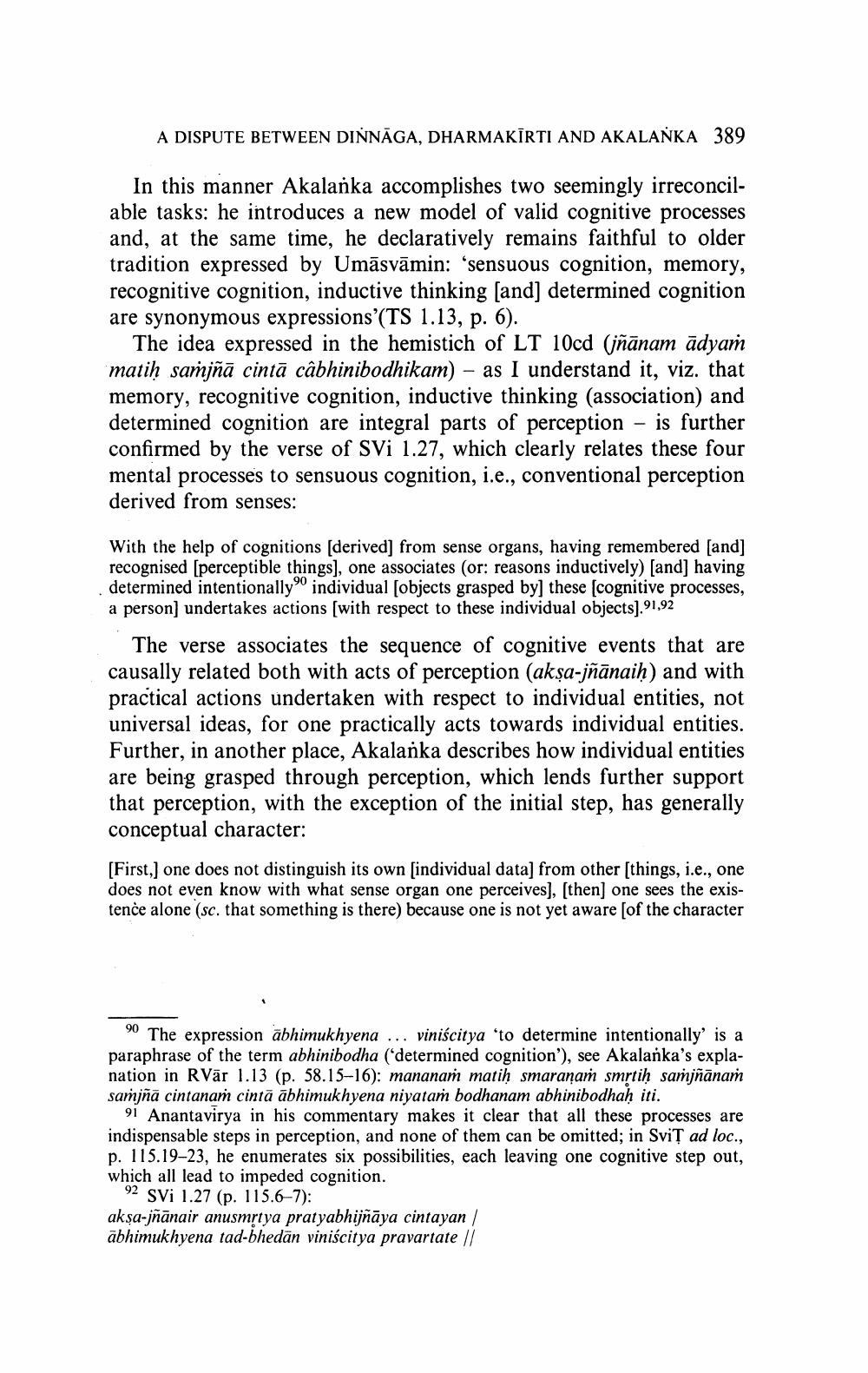________________
A DISPUTE BETWEEN DINNĀGA, DHARMAKĪRTI AND AKALANKA 389
In this manner Akalanka accomplishes two seemingly irreconcilable tasks: he introduces a new model of valid cognitive processes and, at the same time, he declaratively remains faithful to older tradition expressed by Umāsvāmin: 'sensuous cognition, memory, recognitive cognition, inductive thinking (and) determined cognition are synonymous expressions (TS 1.13, p. 6).
The idea expressed in the hemistich of LT 10cd (jñānam ādyam matiḥ samjñā cintā câbhinibodhikam) - as I understand it, viz. that memory, recognitive cognition, inductive thinking (association) and determined cognition are integral parts of perception - is further confirmed by the verse of SVI 1.27, which clearly relates these four mental processes to sensuous cognition, i.e., conventional perception derived from senses:
With the help of cognitions (derived) from sense organs, having remembered [and] recognised (perceptible things), one associates (or: reasons inductively) [and] having determined intentionally individual [objects grasped by] these (cognitive processes, a person) undertakes actions (with respect to these individual objects). 91,92
The verse associates the sequence of cognitive events that are causally related both with acts of perception (akşa-jñānaih) and with practical actions undertaken with respect to individual entities, not universal ideas, for one practically acts towards individual entities. Further, in another place, Akalanka describes how individual entities are being grasped through perception, which lends further support that perception, with the exception of the initial step, has generally conceptual character:
[First] one does not distinguish its own [individual data) from other [things, i.e., one does not even know with what sense organ one perceives), (then) one sees the existence alone (sc. that something is there) because one is not yet aware (of the character
90 The expression ābhimukhyena ... viniścitya 'to determine intentionally' is a paraphrase of the term abhinibodha ("determined cognition'), see Akalanka's explanation in RVār 1.13 (p. 58.15-16): mananam matih smaranam smrtiḥ samjñānam samjna cintanam cinta ābhimukhyena niyatam bodhanam abhinibodhaḥ iti.
91 Anantavirya in his commentary makes it clear that all these processes are indispensable steps in perception, and none of them can be omitted; in SviT ad loc., p. 115.19-23, he enumerates six possibilities, each leaving one cognitive step out, which all lead to impeded cognition.
92 Svi 1.27 (p. 115.6-7): akşa-jñānair anusmrtya pratyabhijñāya cintayan / ābhimukhyena tad-bhedān viniścitya pravartate //




